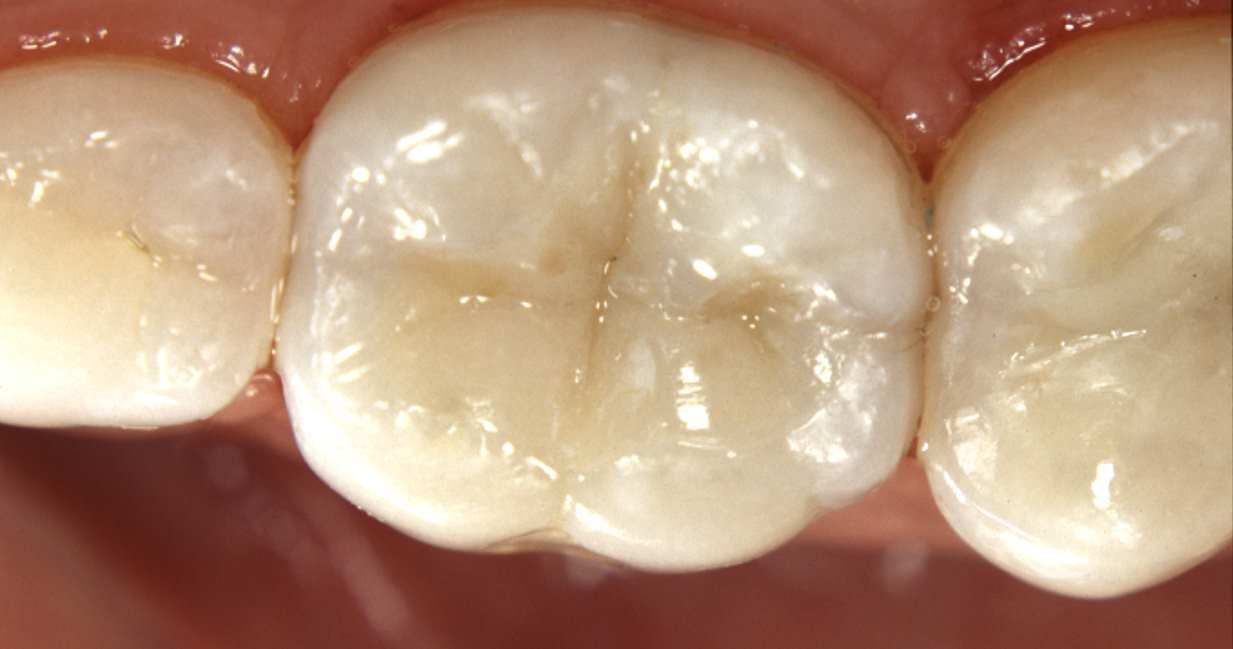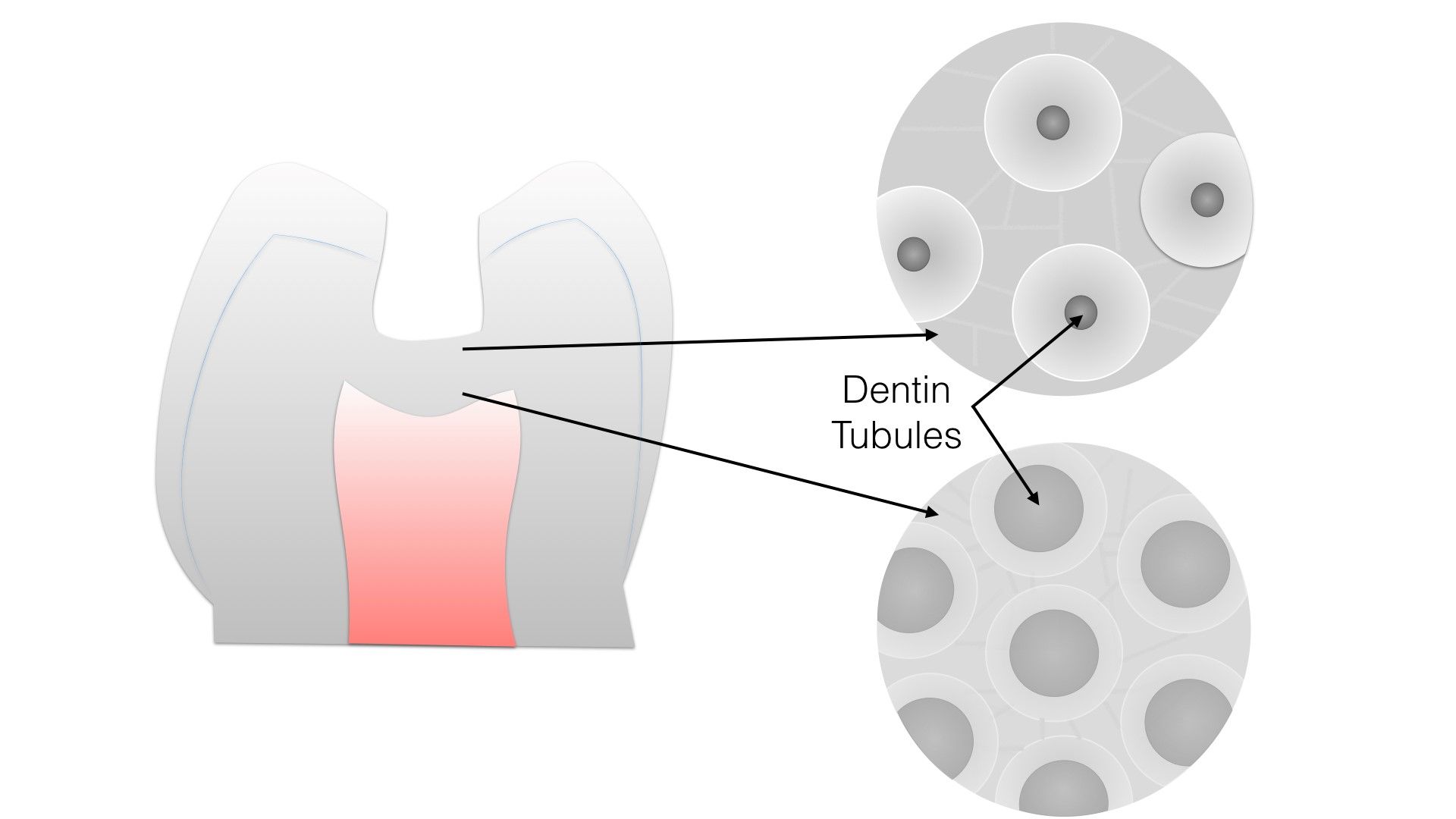
The biggest misconception that I had early on was the thinking that our dentin bond strength primarily comes from the resin tags in the dentin tubules. It turns out that only 15-25% of the dentin bond strength comes from the resin tags in the dentinal tubules. Dentin bond strength mostly comes from the area between the dentin tubules – the intertubular dentin. Here is an occlusal view illustration of a molar demonstrating the difference of superficial dentin versus deep dentin.
Keep in mind that because the dentin tubules get larger as they get closer to the pulp, there is less intertubular dentin for our adhesion. Therefore, the bond strength in deep dentin is going to be less than in superficial dentin. In deeper dentin, we are relying more on resin tags that go into the dentin tubules and less on the intertubular dentin.
Let’s dive further into dentin as a bonding substrate. I imagine the dentin to be made of two parts – the hydroxyapatite (kind of looking like small bricks to me), and the collagen (like these strands of spaghetti noodles), interwoven within the hydroxyapatite. This illustration is my interpretation of the cross section of dentin after it is prepped:
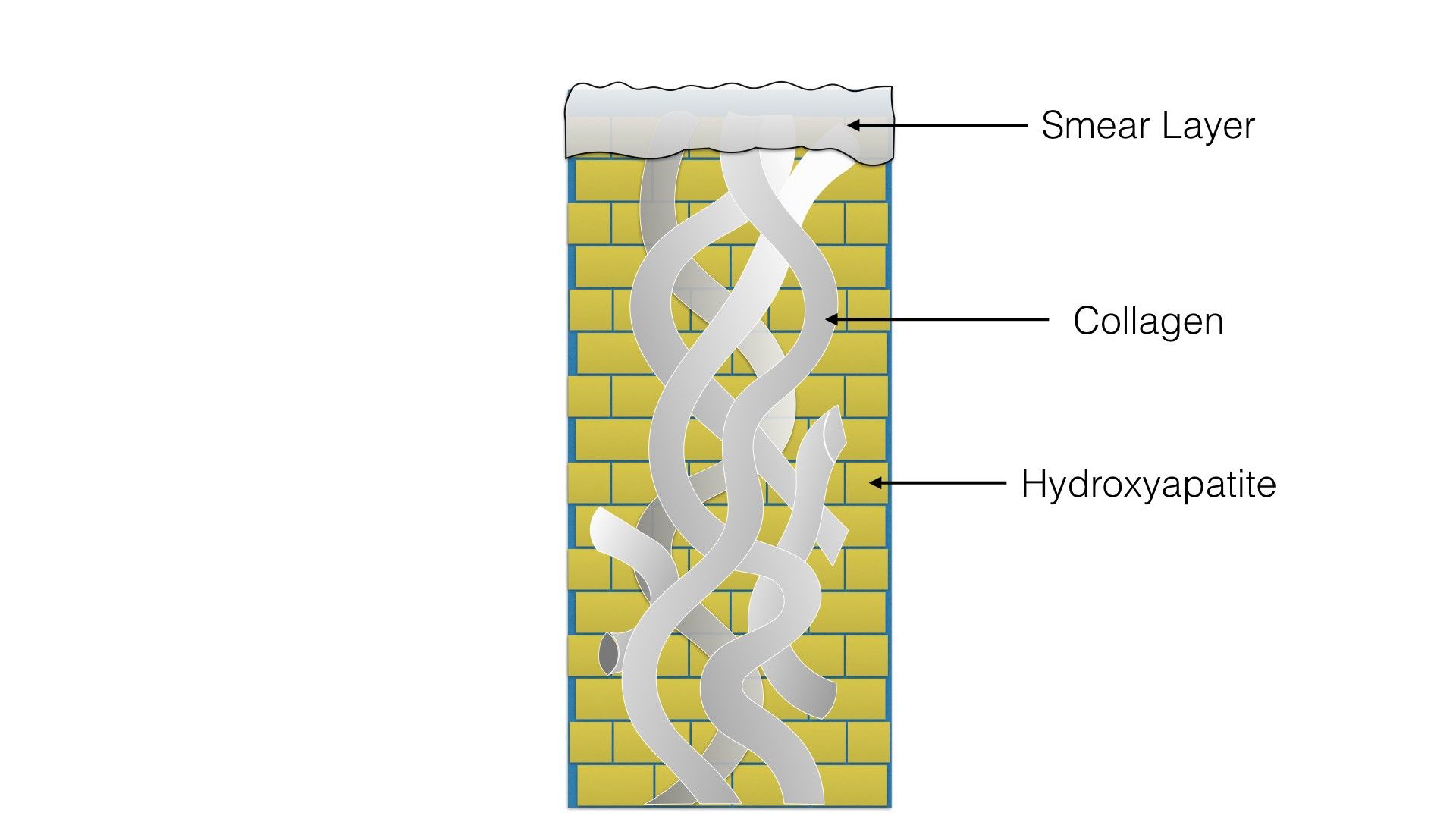
With the total etch technique, phosphoric acid removes the smear layer and removes the hydroxyapatite from the dentin. After rinsing the phosphoric acid and leaving the surface moist, it kind of looks like this:
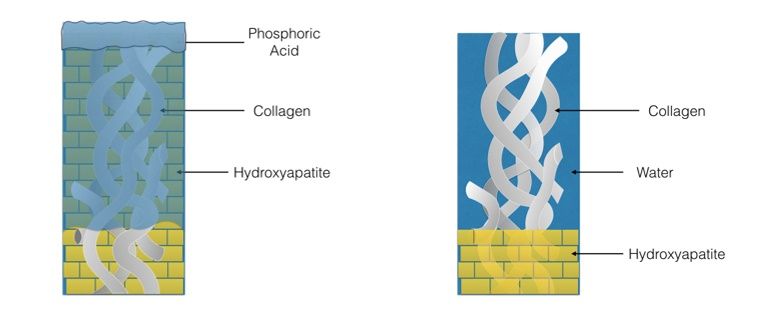
If you dry the dentin the collagen collapses and looks like this:
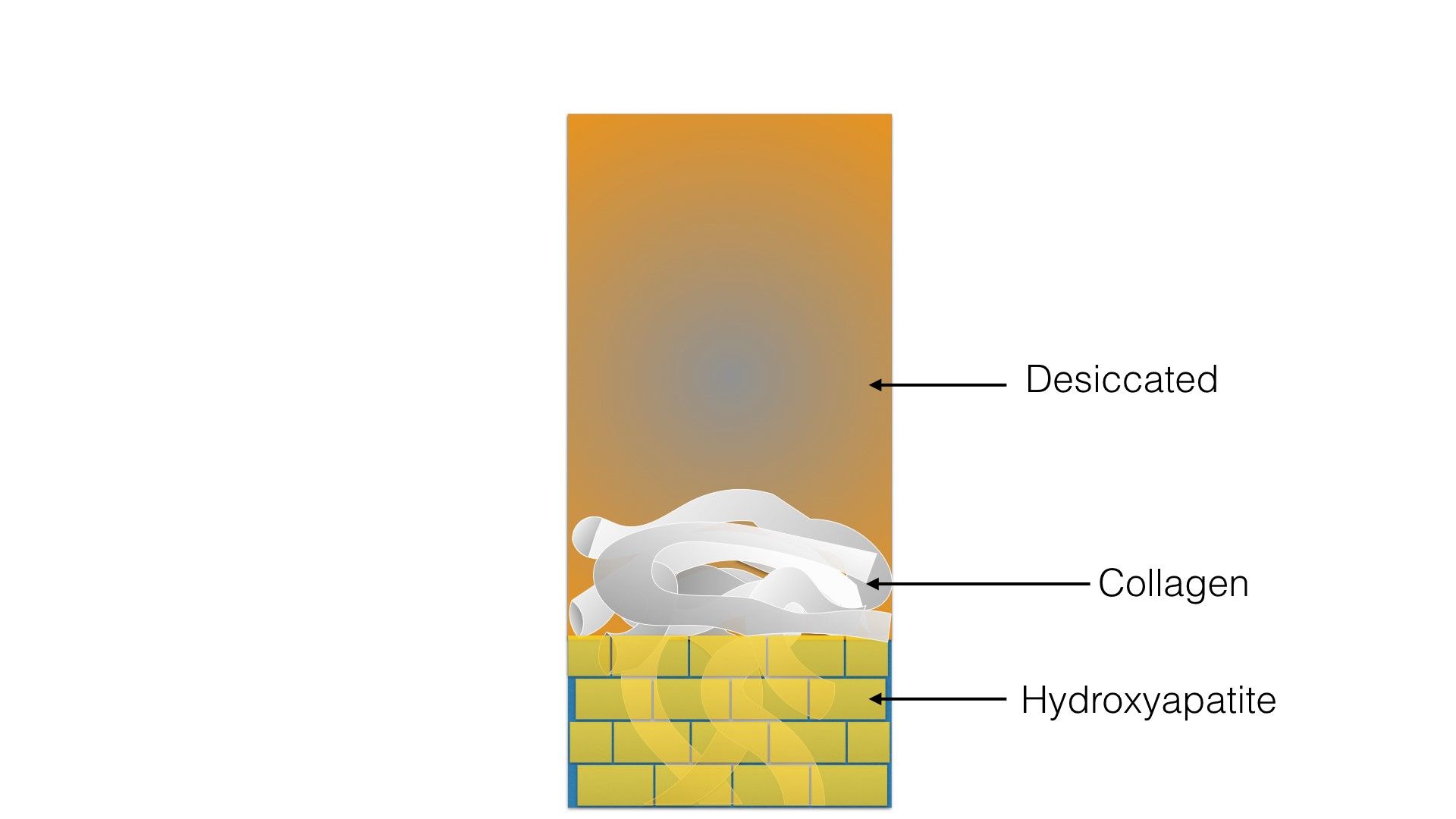
If you use the total etch system, it’s important that the dentin is left moist, or if dried, remoistened. If you have a particular rewetting agent that you like, and you are successful with the product, don’t change. However, there is new research suggesting that the use of chlorohexidine is helpful to prolong dentin bonding by reducing the effects of proteolytic enzymes. In the technique that I use today - if I’m using the total etch technique where I am etching dentin with phosphoric acid for 15 seconds - I will rinse and dry the tooth after etching seconds and moisten with a product called Concepsis (2.2% Chlorohexidine), from Ultradent. I scrub gently with Concepsis for 30-60 seconds, leaving the dentin moist but not flooded.
Another adhesive option is the self-etch technique. In the self-etch technique, no phosphoric acid is used. An acidic primer is placed over the dentin surface. The acidity breaks down the smear layer and allows impregnation of the adhesive into the superficial dentin surface. Though this hybrid layer is thinner than the hybrid layer that is formed with the total etch, it is more uniform in its content with less defects, creating a more consistent hybrid layer.
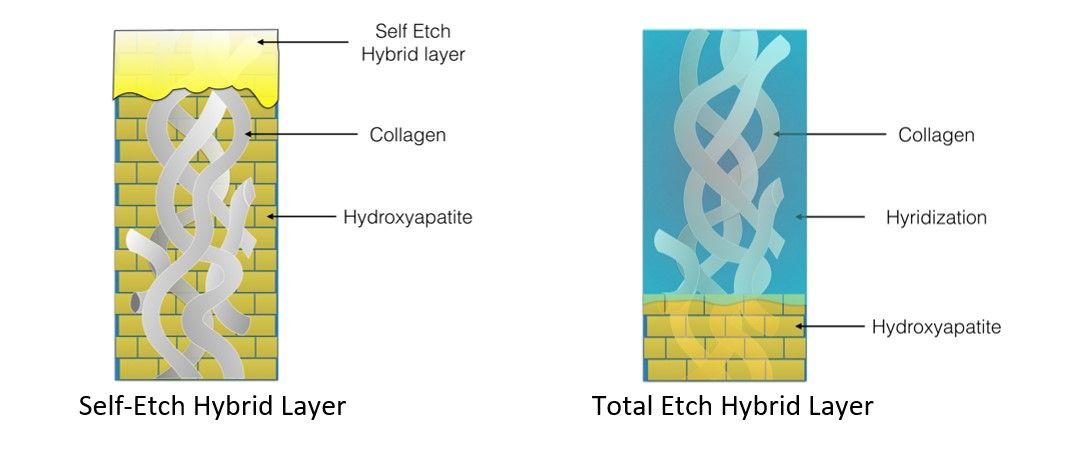
Also, and a biggie for reducing postoperative sensitivity, the dentin tubules are never opened with self-etchers. The self-etchers dissolve thru the smear layer and smear plugs, but typically only the superficial portion of the smear plug. Take a look at my illustrations of the difference, from a self-etch vs phosphoric acid effect on dentin:
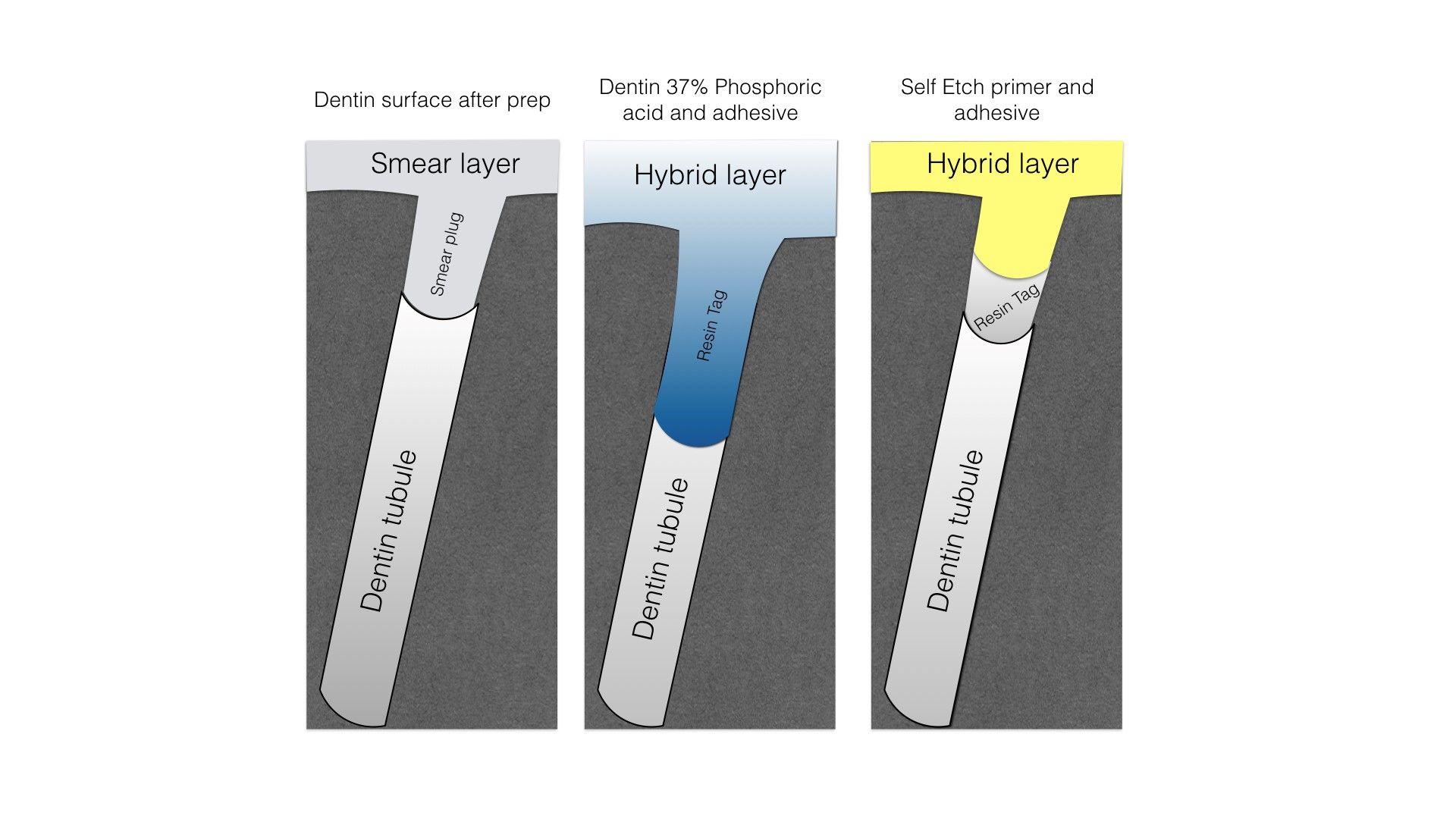
It was this reason, I believe, that self-etchers have become popular: by not removing the smear plugs from the dentin tubules, there is much less potential for sensitivity with dentin bonding. With the bonus of a more consistent smear layer, without voids or disruptions, clinical research has demonstrated that self-etch adhesives can provide a dentin bond that is equal to that found with the best total etch systems. Manufacturers have taken note and have created Universal adhesives, which have taken the common two-step self-etch approach, and created a one-step process. I continue to use 2-step self-etch adhesives because of their long term track record, I believe that the Universal adhesives have a promising future.
My friends, I hope that this review of dentin, and dentin bonding, is helpful.
Please touch base with any questions at
https://www.dothandson.com/social. Yours for better dentistry,








